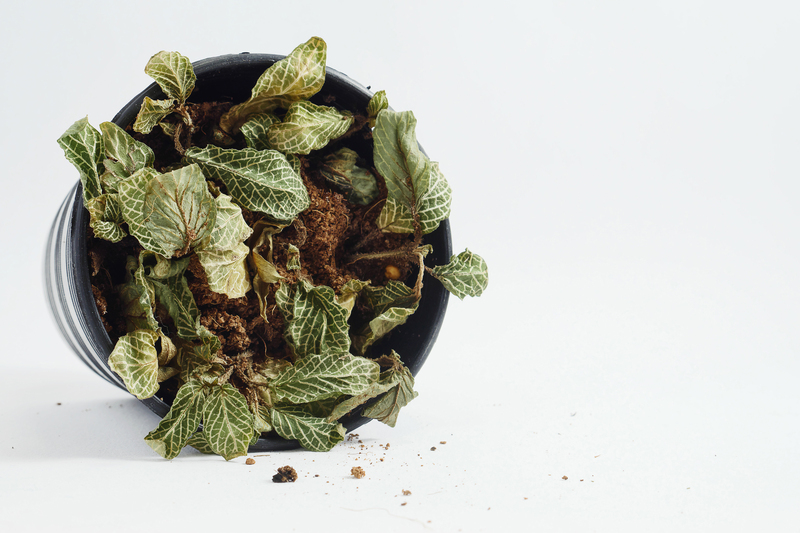Identifying Yellow Spots in Your Home Lawn
Posted on 03/09/2025
Keeping a lush green lawn is a dream for many homeowners, but yellow spots can quickly turn that dream into a nightmare. These discolored patches not only mar the aesthetic appeal of your yard but also indicate underlying issues that need immediate attention. Understanding the causes, solutions, and preventive measures can help you maintain a healthy, vibrant lawn.
Common Causes of Yellow Spots
1. Overwatering or Underwatering: Both overwatering and underwatering can cause stress to your grass, leading to yellow spots. Proper watering techniques are essential for a healthy lawn.
2. Nutrient Deficiency: Grass requires various nutrients, including nitrogen, phosphorus, and potassium. A deficiency in any of these nutrients can cause yellowing.
3. Animal Urine: Pets, especially dogs, often relieve themselves on lawns, causing the grass to yellow due to the high nitrogen content in their urine.
4. Pests and Diseases: Various pests like grubs and diseases such as fungal infections can cause yellow spots. Identifying these issues early can allow for effective treatment.
5. Soil Compaction: Compact soil restricts root growth and limits the amount of air, water, and nutrients that reach the grassroots.
6. Incorrect Mowing Practices: Mowing the grass too short or using dull blades can stress the lawn, leading to yellow patches.

Identifying the Cause
To correctly identify the cause, it's essential to examine your lawn closely. Here are some steps to help you pinpoint the issue:
- Inspect the Soil: Check for compacted soil and test the soil's pH and nutrient levels.
- Look for Pests: Examine the affected areas for signs of grubs or other pests.
- Check Watering Patterns: Review your watering schedule and methods.
- Observe Your Pets: Monitor your pets' behavior to see if they frequently relieve themselves in specific areas.
Solutions for Yellow Spots
Once you've identified the cause of the yellow spots, you can take appropriate action:
1. Adjust Watering: Ensure you're watering your lawn appropriately. Most grass types require about 1 inch of water per week.
2. Fertilize: Apply a balanced fertilizer to correct nutrient deficiencies.
3. Pet Urine Management: Train your pets to use a designated area or dilute urine spots with water immediately after they occur.
4. Pest Control: Use appropriate pesticides or natural remedies to eliminate pests.
5. Aerate the Soil: Use a lawn aerator to relieve soil compaction.
6. Mowing Best Practices: Ensure you're mowing at the correct height and using sharp blades.
Preventive Measures
- Regular Maintenance: Keep a regular lawn maintenance schedule that includes mowing, watering, and fertilization.
- Soil Testing: Test your soil regularly to keep track of pH and nutrient levels.
- Monitor Irrigation Systems: Check for leaks or malfunctions in your irrigation system.
Pros and Cons of Lawn Treatments
Pros:
- Improved lawn health.
- Enhanced aesthetic appeal.
- Prevention of further damage.
Cons:
- Costs for professional treatments.
- Time-consuming maintenance.
- Potential environmental impact of chemical treatments.
Tips for a Healthy Lawn
- Regularly aerate your lawn.
- Water deeply but infrequently.
- Use organic fertilizers.
- Keep an eye out for early signs of pests and diseases.

Takeaways
- Identifying the cause of yellow spots is crucial for effective treatment.
- Proper lawn care practices can prevent yellow spots.
- Both natural and chemical solutions have their pros and cons.
Conclusion
Yellow spots in your home lawn can be a frustrating issue, but with the right knowledge and approach, you can restore the green, lush lawn you desire. By understanding the common causes, implementing effective solutions, and practicing preventive measures, you can keep your lawn looking its best year-round.
If you found this article helpful, start by examining your lawn closely to identify any underlying issues, and take immediate steps to correct them. Your beautiful, green lawn is just a few actions away.







